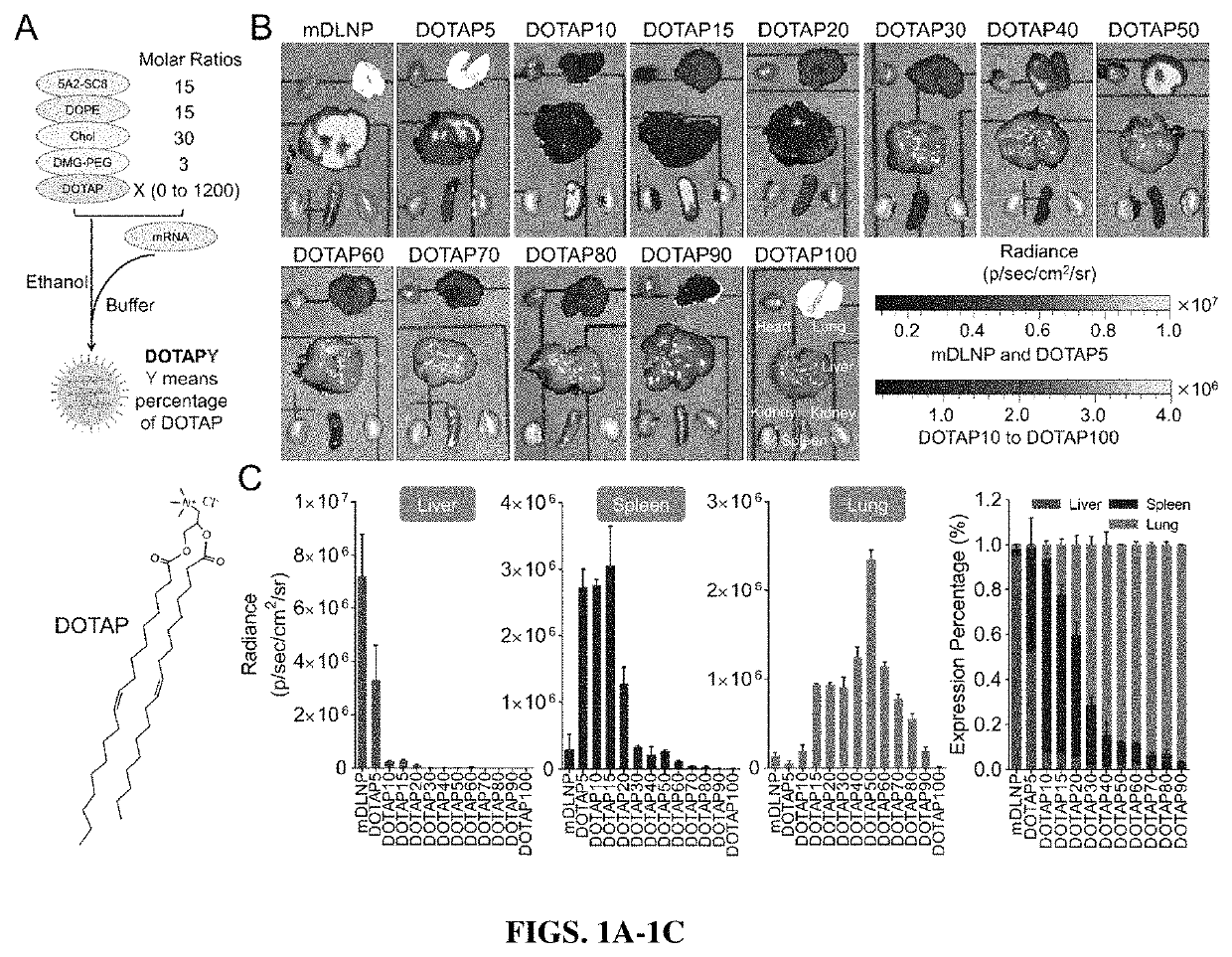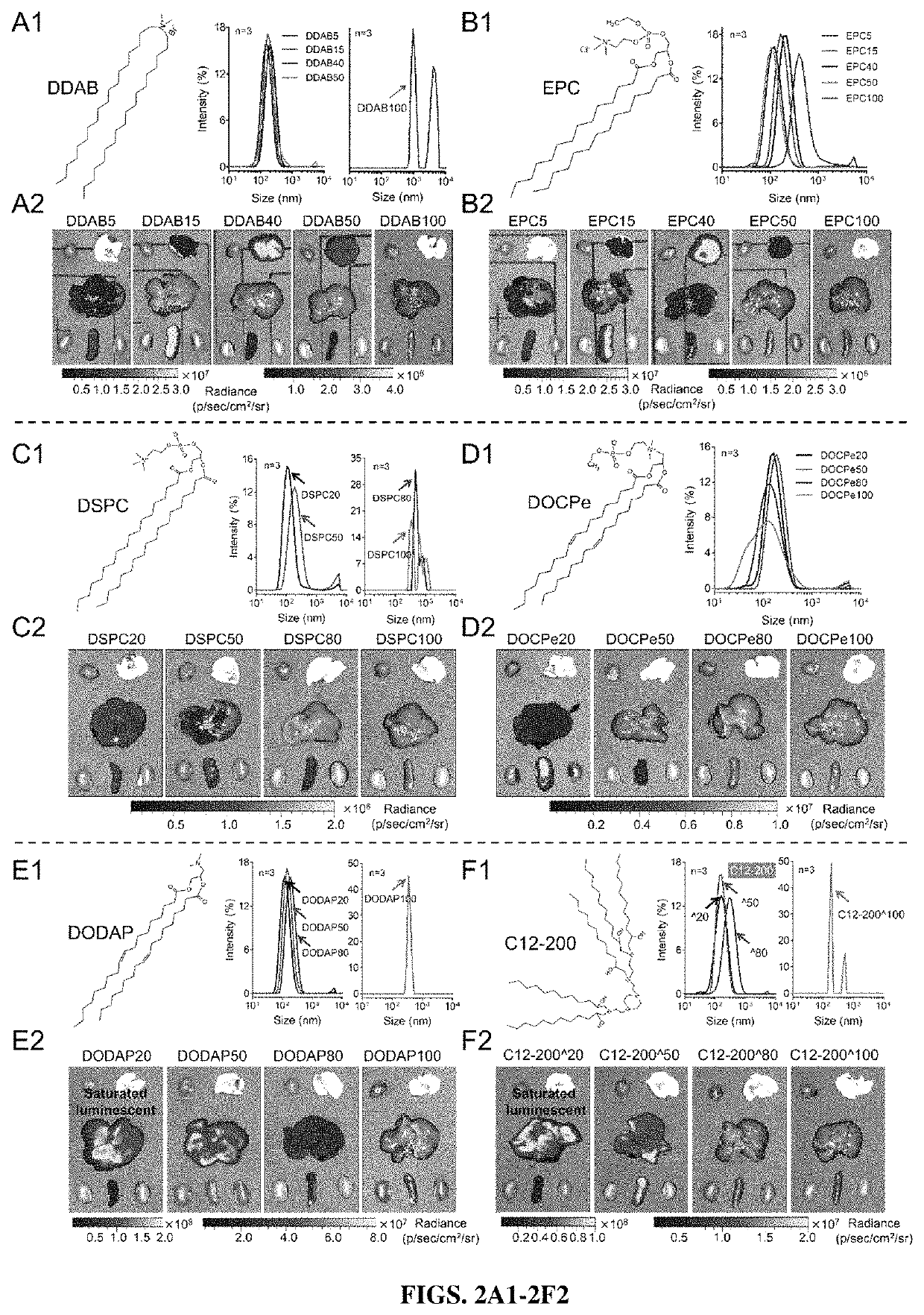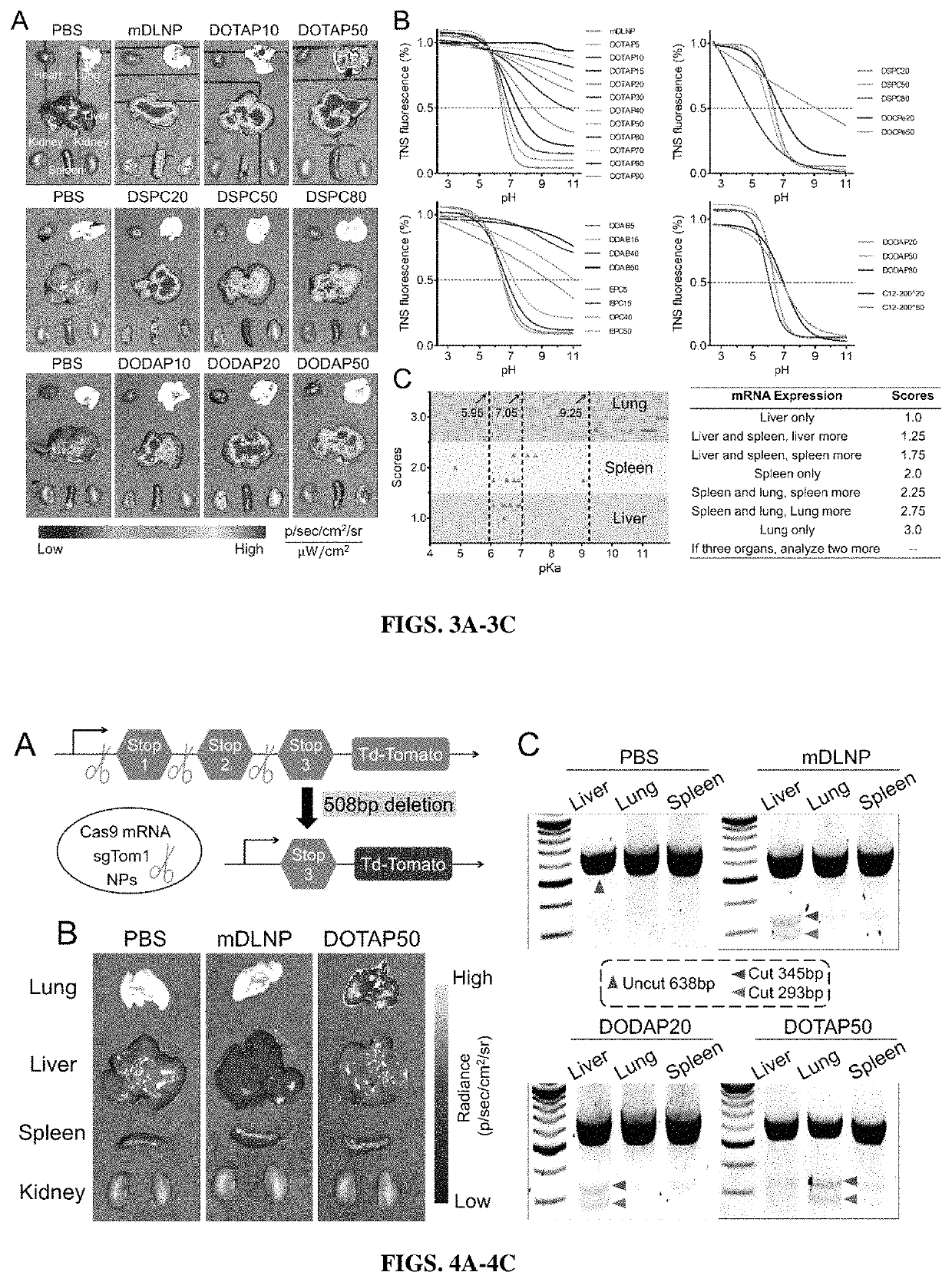Compositions and methods for organ specific delivery of nucleic acids
a technology of nucleic acids and compositions, applied in the field of molecular biology, can solve the problems of reducing the efficacy of compositions on delivery into the target organ, limiting the use of in vivo therapeutics in the clinic, and generally not being selective,
- Summary
- Abstract
- Description
- Claims
- Application Information
AI Technical Summary
Benefits of technology
Problems solved by technology
Method used
Image
Examples
example 1
on of DOTAP Modified Lipid Nanoparticles
[0337]Lipid nanoparticles (LNPs) are the most efficacious carrier class for in vivo nucleic acid delivery. Historically, effective LNPs are composed of 4 components: an ionizable cationic lipid, zwitterionic phospholipid, cholesterol, and lipid poly(ethylene glycol) (PEG). However, these LNPs result in only general delivery of nucleic acids, rather than organ or tissue targeted delivery. LNPs typically delivery RNAs only to the liver. Therefore, new formulations of LNPs were sought in an effort to provide targeted nucleic acid delivery.
[0338]The four canonical types of lipids were mixed in a 15:15:30:3 molar ratio, with or without the addition of a permanently cationic lipid. Briefly, LNPs were prepared by mixing 5A2-SC8 (ionizable cationic), DOPE (zwitterionic), cholesterol, DMG-PEG, and DOTAP (permanently cationic) in the ratios shown in Table 0.1.
[0339]
TABLE 0.1Molar Ratios and Percentages of Lipids in modified LNPS.Lipids / Molar RatiosMolar...
example 2
ization of DOTAP Modified mDLNP Formulations
[0341]To characterize the different mDLNP formulations, size, polydispersity index and zeta-potential were examined by dynamic light scattering, 3 separate times for each formulation. Size and polydispersity index are shown in FIG. 5A, indicating regardless of DOTAP concentration, the formulations all fell within a size range of about 90 nm to about 160 nm, while the polydispersity indices varied from about 0.1 to about 0.3, indicating relative homogeneity of size. Zeta potential is shown for each formulation in FIG. 5B and shows that the zeta potential generally increases with the concentration of DOTAP.
[0342]Next, encapsulation efficiency was tested using a Ribogreen RNA assay (Zhao et al., 2016). Briefly, mRNA was encapsulated with about 85% efficiency in mDLNPs without DOTAP (FIG. 5C) when the mRNA was dissolved in acidic buffer (10 mM citrate, pH 4). Low pH is required to protonate the ionizable amine in the ionizable cationic lipid (...
example 3
of Permanently Cationic Lipid Modified mDLNPs for mRNA Delivery
[0344]To examine the delivery efficacy by which LNPs including a permanently cationic lipid are able to deliver active cargo in vitro, the DOTAP modified mDLNPs were loaded with mRNA encoding luciferase, and Huh-7 liver cells and A549 adenocarcinomic human alveolar basal epithelial cells were transfected with the 50 ng / well of mRNA. These cells were cultured for 24 hours before luciferase expression and cell viability were examined. As shown in FIG. 6A, DOTAP percentages of 5%-50% were better for mRNA delivery and expression in the Huh-7 liver cells in vitro, and 10% DOTAP appeared to have the greatest delivery and expression of luciferase (FIG. 6A). It is noted that delivery characteristics in vivo may be different. Generally, these studies may not be useful to predict in vivo activity, nor tissue tropism due to the additional in vivo barriers, organ distribution, and cellular specify of the SORT LNPs. Additionally, cel...
PUM
 Login to View More
Login to View More Abstract
Description
Claims
Application Information
 Login to View More
Login to View More - R&D
- Intellectual Property
- Life Sciences
- Materials
- Tech Scout
- Unparalleled Data Quality
- Higher Quality Content
- 60% Fewer Hallucinations
Browse by: Latest US Patents, China's latest patents, Technical Efficacy Thesaurus, Application Domain, Technology Topic, Popular Technical Reports.
© 2025 PatSnap. All rights reserved.Legal|Privacy policy|Modern Slavery Act Transparency Statement|Sitemap|About US| Contact US: help@patsnap.com



